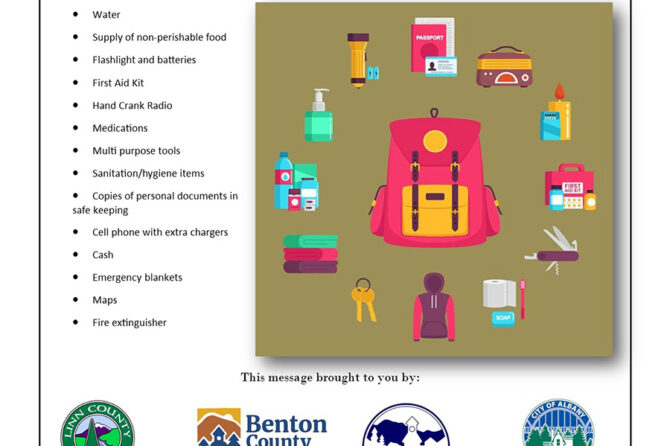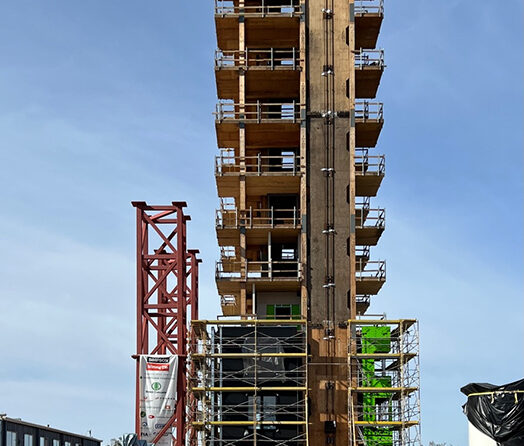Reporter for The Canyon Weekly
The discussion of how to manage Detroit Lake levels and the fate of endangered fish stocks continued on Thursday, Jan. 12 in Stayton.
The U.S. Army Corp of Engineers held a public meeting to discuss the latest draft environmental impact statement (EIS) at the Stayton Community Center. The event was attended by more than 50 people, including Detroit Mayor Jim Trett and Councilors Denny Nielsen and Eric Page, Marion County Commissioner Kevin Cameron and Fritz Graham, field representative for U.S. Sen. Ron Wyden.
The new proposal from the U.S. Army Corps of Engineers, released on Nov. 30, is a 2,243-page draft environmental impact statement for a program that would affect all 13 Willamette reservoirs, including Detroit Lake.
The document is undergoing a comment period that lasts through Feb. 23. Other in-person public meetings were held in Springfield, Eugene and Sweet Home.
The Corps has been working to resolve fish passage and water temperature issues since 2008, when a National Marine Fisheries Service “biological opinion” concluded that the continued operation and maintenance of the Willamette dams “was insufficient to avoid jeopardizing the continued existence” of endangered Chinook and steelhead stocks.
The Corps is under a court order to take action to improve threatened winter steelhead and spring Chinook salmon stocks in the Willamette basin, and the new EIS is intended to be a response to the court order.
The long-delayed and long-analyzed project is going through a bit of a reboot.
Instead of Corps officials working specifically on Detroit, the new EIS reflects a broader initiative that covers the entire 13-dam system.
Earlier proposals for Detroit included consideration of building a massive tower near the dam to address the water temperature issue and a giant weir to move fish around the dam. Such structures also are part of the preferred alternative in the revised plan, but the plan is for a lake level that will make it easier for recreation interests to operate at Detroit Lake.
The process is of keen interest in the Santiam Canyon because of the tourism value of Detroit Lake. If solutions to the fish passage/temperature challenges require lowering the lake level to a significant degree, the region’s economy will suffer.
Nielsen noted that “We don’t know which way to jump in the community until a final decision is made on which alternative to go with.”
But Nielsen also added that he was “encouraged that they are making decisions on freshened modeling. And the longer we have lots of water late in the session the better off we are going to be. The recreational community in places like Detroit is just as endangered as the fish.”
The proposal is intended to improve conditions for ESA-listed fish while providing flexibility for the USACE to meet water demands for fish and wildlife, water supply, hydropower generation, and recreation. The EIS says the Corps can meet project goals by “using a combination of modified operations and structural improvements, along with other measures to balance water management flexibility and meet ESA-listed fish obligations.”
The earlier approach with the tower and the weir also was reviewed by the Corps. However, the alternative would be “the costliest alternative to implement” at more than $110 million per year, the draft report said. This high cost, the report said, “make it unlikely this alternative would be acceptable to many stakeholders, agencies and the public.”
The Corps timeline for the preferred alternative at Detroit calls for a temperature control tower to be completed by 2031 and downstream fish passage work to be completed by 2035. No final budget or sources of funding were itemized.
“I see an attitudinal change that is very positive,” Nielsen said. “It was more positive, more human and community-centric than it has been in the past.”
The past includes more-explosive public sessions, both in Stayton and Gates, in the 2017-18 iteration of the project. At those sessions Detroit and Santiam Canyon interests felt they weren’t being listened to amid Corps proposals that might have severely limited lake use for perhaps as long as two years.
TO GET INVOLVED
The U.S. Army Corps of Engineers is accepting public comment on the draft environmental impact statement for the Willamette River basin through Feb. 19. Email [email protected] and put “Willamette Valley System Draft EIS” in the subject field or write to U.S. Army Corps of Engineers, Attn. CENWVP-PME-E / Willamette EIS, P.O. Box 2946, Portland, OR 97208-2946.
Copies of the draft environmental impact statement and other documents will be available as of Jan. 23 at public libraries in Salem, Corvallis and Eugene as well as the Linn-Benton Community College library in Albany.
KEY OBJECTIVES
1. Greater flexibility in water management (refill, drawdown timing, etc.).
2. Create nature-based structures that help prevent bank erosion.
3. Greater flexibility in hydropower production.
4. Increase ESA-listed fish passage survival at dams.
5. Improve water management during the conservation season to benefit ESA-listed fish and other project purposes.
6. Improve water quality to benefit ESA-listed species.
7. Reduce spawning and rearing habitat competition caused by hatchery fish






